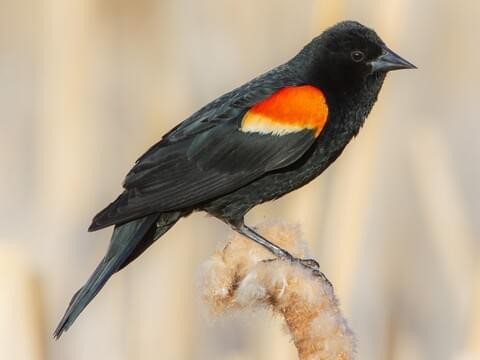
By Robin Russell, Volunteer Writer
“What kind of bird is that?” is a question most of us have posed at one time or another. Whether it’s through a distinguishing song or because of some unique coloration, our feathered friends enrich our world.
This same question is often asked of Cat Smith – the Dumb Friends League’s Senior Volunteer Coordinator and resident bird-watcher – by dog walking volunteers or those enjoying the tranquility of the outdoor Friendship Circle at the Leslie A. Malone Center.
To answer this question, Cat recently spent some time bird-watching and has identified eight of the most commonly seen species near the League. She reports they are red-winged blackbirds, house finches, mourning doves, red-tailed hawks, Canada geese, mallards, northern flickers, and starlings. Of these, the first three appear to be most common in our immediate area.



What accounts for the abundance of these particular species in the Friendship Circle? One reason may be the Memorial Garden Walk’s close proximity to the detention pond on the Malone Center property. Red-winged blackbirds like water habitats, in part because of their food preferences. Canada geese and mallards are waterfowl and also prefer this type of habitat. Did you know that mallards are ancestors of domestic ducks and have in part domesticated themselves to rely heavily on handouts or trash in city parks? This may be one reason why we see so many ducks (and geese) in Washington Park, for example.
Here are some other interesting facts I learned about these birds. First, the call of the red-tailed hawk is the standard used for most birds of prey in movie soundtracks. (Think eagles!) Second, in the case of starlings, while the male does most of the nest building, it is ultimately completed by the female who throws out a lot of his materials. Finally, in red-winged blackbirds, it’s the males who have the “red wings.” In fact, a red patch appears whenever he sings and spreads his wings. Despite their name, female blackbirds are actually brown. As with most bird species, the males are more colorful to attract the females.

Perhaps all these birds have realized that the Dumb Friends League Friendship Circle is a safe and good place to be in connection with those who love nature and animals. Next time you’re in the Friendship Circle, see if you can spot any of our fine feathered friends!
If you’re interested in birds or want help identifying one, check out the following resources:
- BirdNET Sound ID app: https://birdnet.cornell.edu/
- Colorado Field Ornithologists: https://cobirds.org/colorado-birding/
- The Cornell Lab of Ornithology: www.allaboutbirds.org
- The Merlin Bird ID app: merlin.allaboutbirds.org
